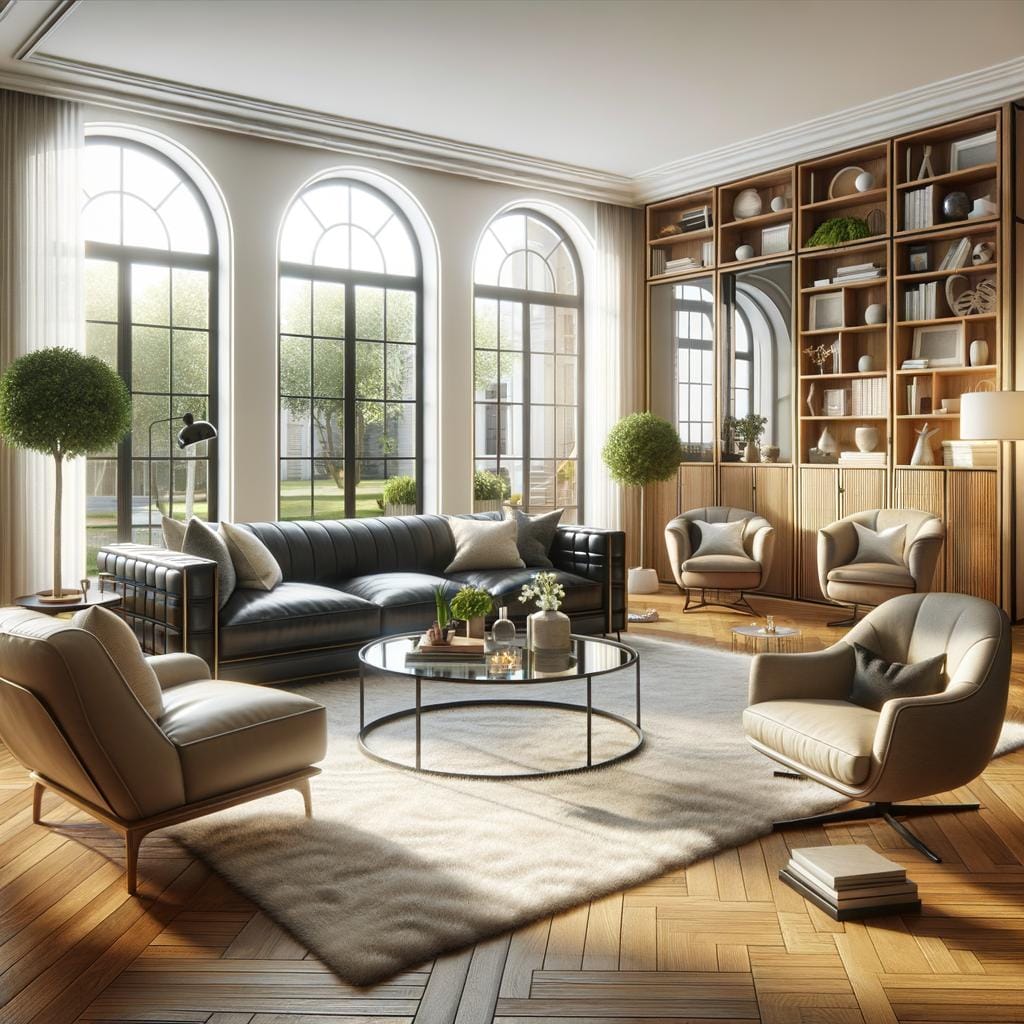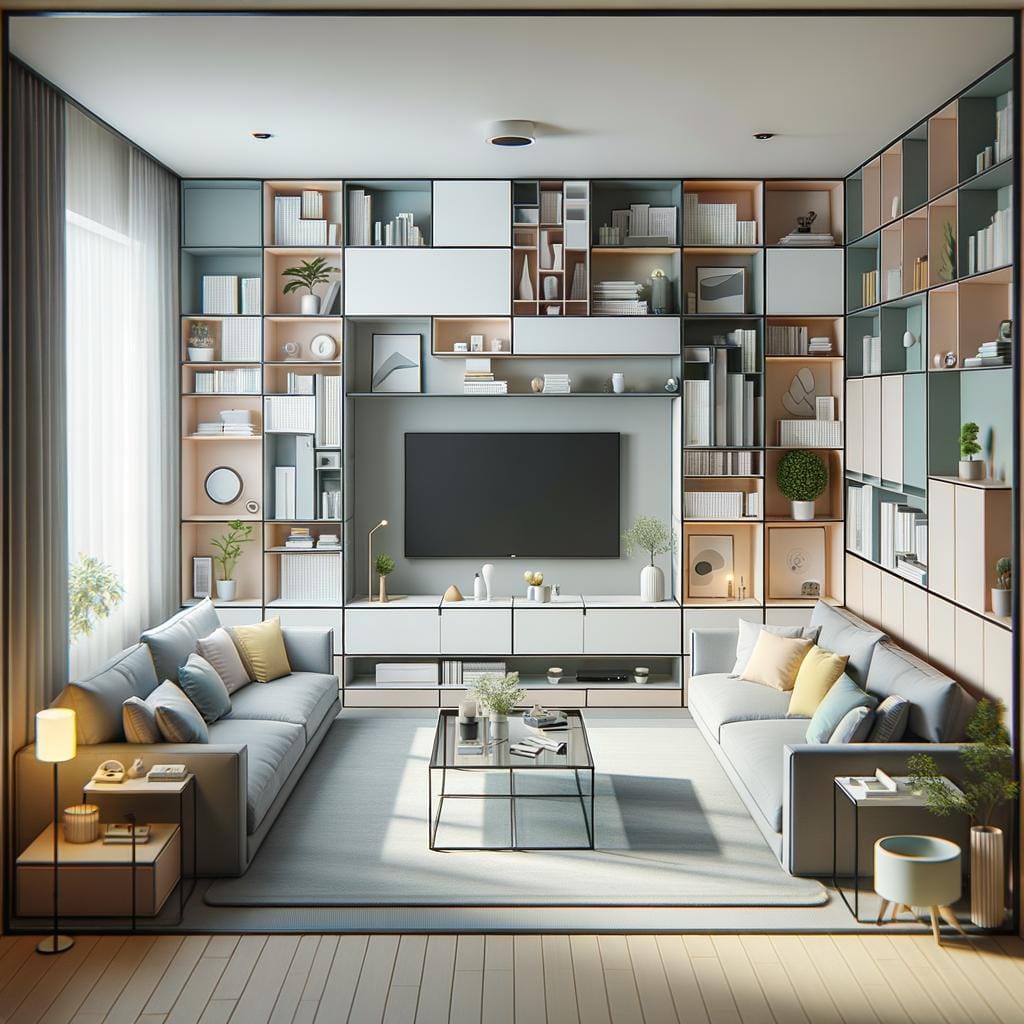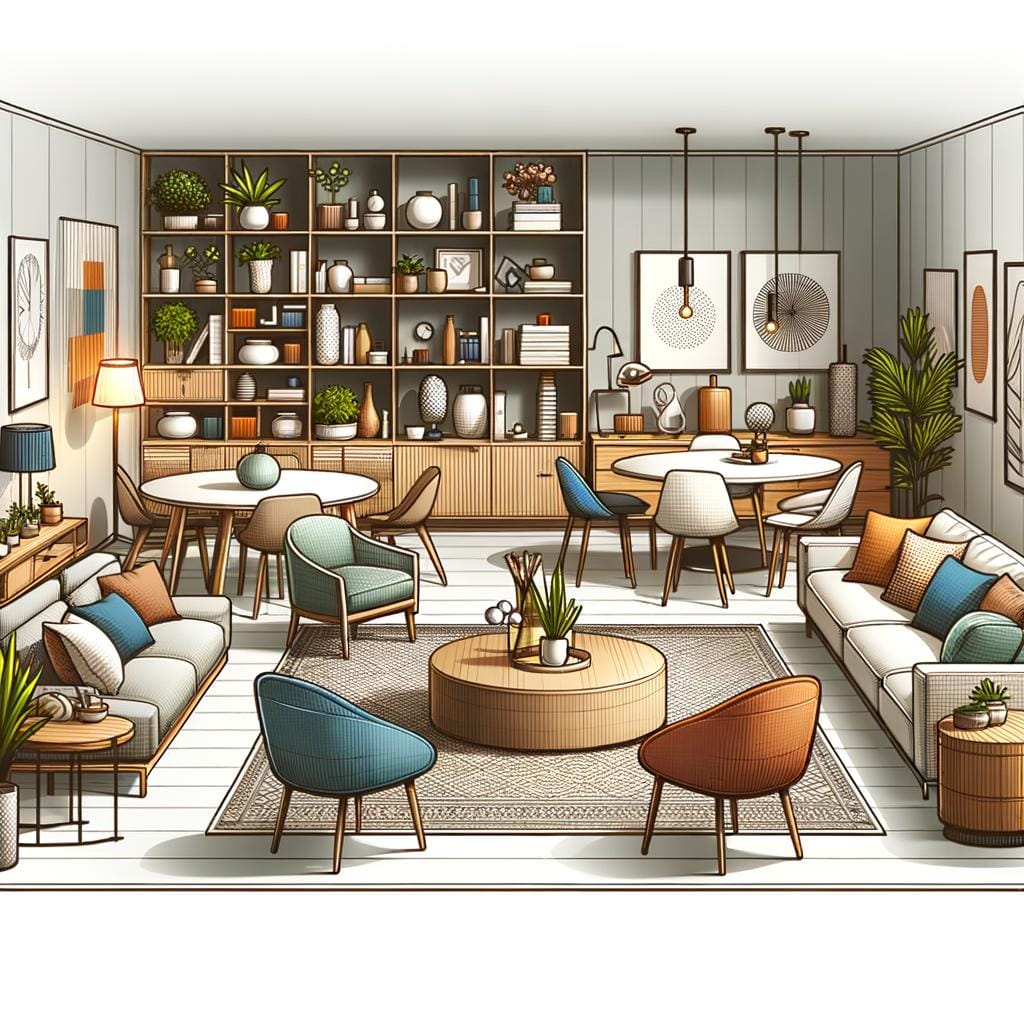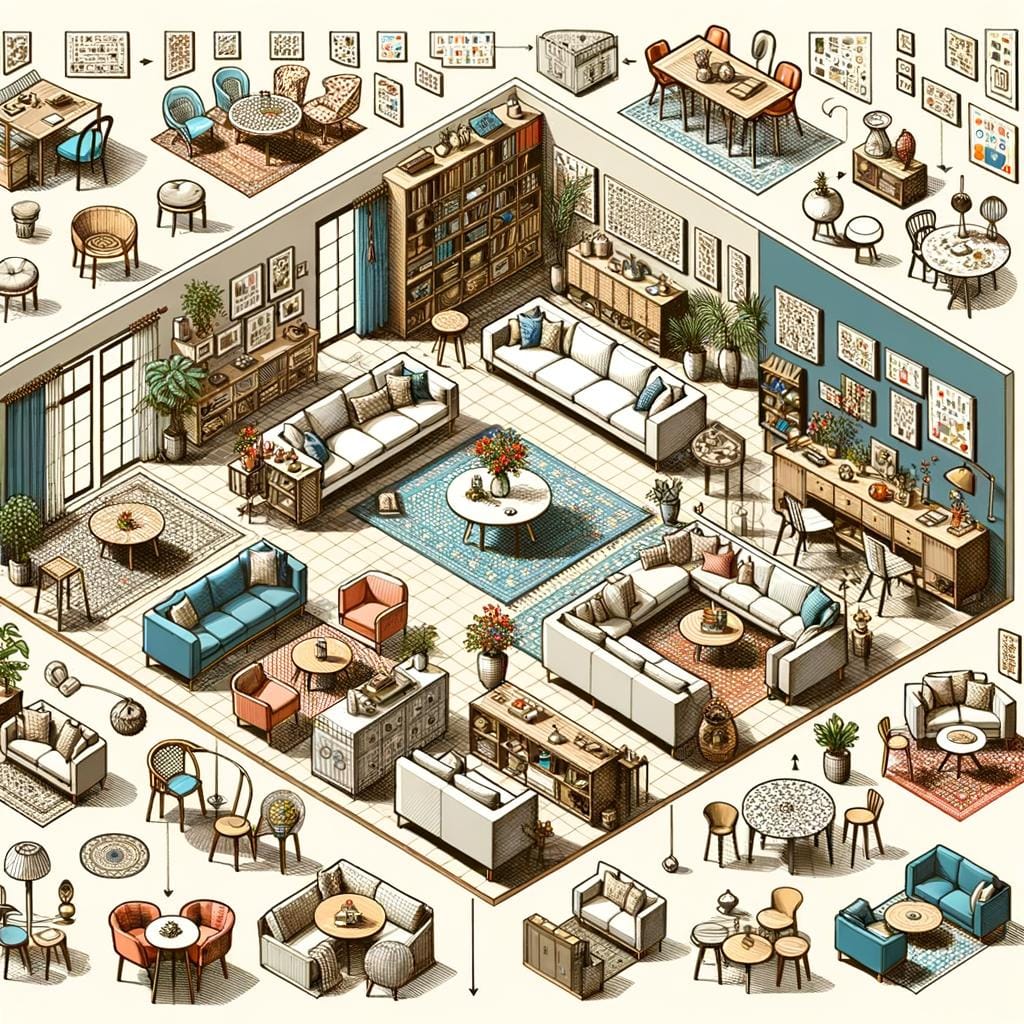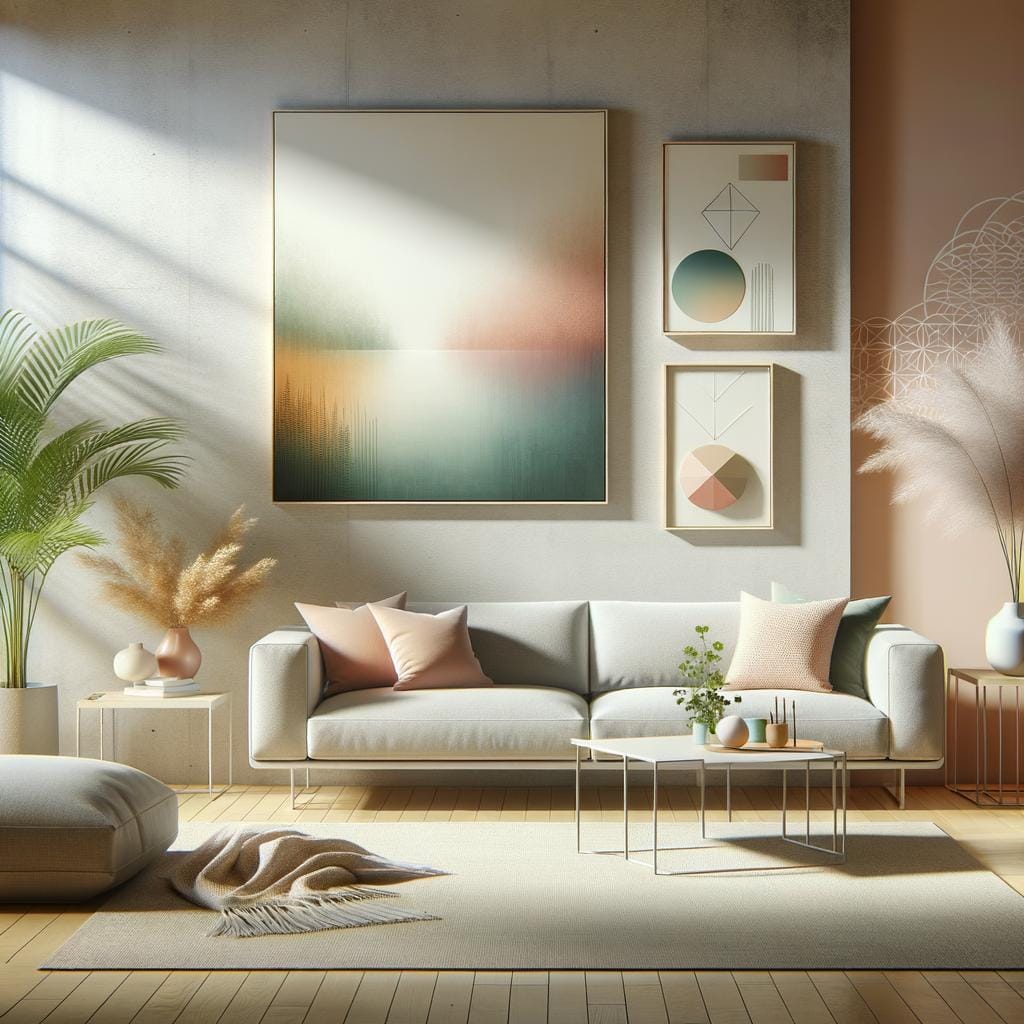Furniture layout planning plays a crucial role in creating a comfortable and functional living space. Whether you are moving into a new home or looking to revamp your current one, the way you arrange your furniture can significantly impact the overall look and feel of a room. By strategically planning the layout of your furniture, you can maximize space utilization, improve traffic flow, and enhance the aesthetic appeal of your living area.
Before diving into furniture layout planning, there are several important considerations to keep in mind. It is essential to evaluate the size and layout of the room, taking note of any architectural features or obstacles that may affect furniture placement.
Understanding your own lifestyle and needs will also help you determine the type of furniture pieces that will best suit your space. Additionally, considering factors like natural light sources, room function, and personal style preferences is key to crafting a well-designed layout.
Room measurements and scale are fundamental aspects of effective furniture layout planning. Properly measuring your space and furniture pieces ensures that everything fits appropriately without overcrowding or leaving excessive empty gaps.
Understanding scale helps you create a balanced composition within the room, preventing oversized or undersized items from disrupting the harmony of the space. By paying attention to these key factors, you can achieve a well-proportioned and visually appealing furniture arrangement that enhances both form and function in your home.
Considerations Before Planning Your Furniture Layout
Understanding the Function of the Space
Before diving into furniture layout planning, it is crucial to understand the function of the space you are designing. Is it a living room meant for entertaining guests, a bedroom for relaxation, or a home office for productivity? By defining the purpose of the room, you can determine what furniture pieces are essential and how they should be arranged to facilitate that function.
Identifying Traffic Flow
Another important consideration before planning your furniture layout is identifying the traffic flow within the room. Take note of entry and exit points, as well as any pathways that need to remain clear for easy movement. Ensuring that there is enough space between furniture pieces will help maintain a smooth flow of traffic throughout the room while also preventing overcrowding.
Budget and Prioritization
Before finalizing your furniture layout plan, consider your budget and prioritize which pieces are essential versus optional. This will help you make informed decisions when selecting furniture pieces based on quality, functionality, and style. By setting a budget and prioritizing your needs, you can create a well-balanced and cohesive furniture layout that meets both practical and aesthetic requirements.
By considering these factors before diving into furniture layout planning, you can set yourself up for success in creating a functional and visually appealing space that suits your needs and lifestyle.
Room Measurements and Scale
When it comes to designing a space, taking accurate room measurements and understanding scale are crucial aspects of successful furniture layout planning. By carefully considering the dimensions of the room, you can determine the optimal placement of furniture to create a functional and visually appealing layout.
Measuring Your Room
Before deciding on the furniture pieces for your space, it’s important to measure the dimensions of the room accurately. Start by measuring the length and width of the walls, as well as the height of the ceiling. Additionally, consider any architectural features such as windows, doors, or built-in elements that may impact furniture placement. By having these measurements on hand, you can better visualize how different furniture arrangements will fit within the space.
Understanding Scale
Scale refers to the size of objects in relation to one another and the overall space. When planning your furniture layout, it’s essential to consider how each piece will fit proportionally within the room. Avoid overwhelming a small space with oversized furniture or cluttering a large room with too many small pieces.
Pay attention to both height and width when selecting furniture to ensure that it complements the scale of the room. By maintaining proper scale throughout your layout, you can create a sense of balance and harmony in your home.
Tips for Room Measurements and Scale
- Use a tape measure and graph paper to create a scaled floor plan of your room.
- Consider creating zones within the space based on its function (e.g. seating area, dining area).
- Experiment with different furniture arrangements on paper before moving pieces around in the actual room.
- Take into account traffic flow and allow for adequate pathways between furniture items.
By incorporating these considerations into your furniture layout planning process, you can achieve a well-balanced and visually pleasing arrangement that maximizes both function and style in your home.
Choosing the Right Furniture Pieces for Your Space
When it comes to furniture layout planning, one of the key considerations is choosing the right furniture pieces for your space. The furniture you select will not only impact the overall aesthetic of the room but also its functionality and comfort. Before making any purchases, it’s important to take into account the size of the room, the layout, and how you intend to use the space.
One important factor to consider when choosing furniture pieces is the scale of the items in relation to the size of the room. A large sectional sofa may look great in a spacious living room, but it could overwhelm a smaller space. Similarly, oversized furniture in a small room can make it feel cramped and crowded. It’s essential to measure your space accurately and choose furniture that fits proportionally.
Additionally, think about how you will use the room on a day-to-day basis. For example, if you entertain often, you may want to prioritize seating options like sofas and armchairs. If you work from home, investing in a comfortable desk or work area is crucial. By selecting furniture pieces based on functionality and purpose, you can ensure that your space not only looks great but also serves your needs effectively.
| Size of Room | Recommended Furniture Pieces |
|---|---|
| Small Room | Space-saving furniture like multi-functional pieces or compact designs. |
| Large Room | Larger statement pieces like sectional sofas or accent chairs. |
Remember that your choice in furniture pieces can greatly influence the flow and functionality of a room. Take your time to evaluate different options, consider both style and practicality, and ensure that each piece contributes positively to your overall furniture layout plan. With careful consideration and thoughtful selection, you can create a space that not only looks beautiful but also meets all your needs seamlessly.
The Art of Arranging Furniture to Optimize Space and Functionality
The arrangement of furniture in a room can have a significant impact on how the space is utilized and how functional it is for its intended purpose. When it comes to optimizing space and functionality through furniture layout planning, there are several key factors to consider.
One important aspect is ensuring that there is enough clearance around each piece of furniture to allow for easy movement within the room. This includes making sure that pathways are clear and unobstructed, and that furniture placement does not impede access to doors or windows.
Another crucial factor to consider in furniture layout planning is ensuring that the placement of each piece serves a specific purpose or function within the room. For example, in a living room, the seating arrangement should facilitate conversation and interaction, while in a bedroom, the positioning of the bed should promote rest and relaxation. By carefully considering the intended function of each area within a room, you can create an arrangement that enhances usability and comfort.
In addition to functionality, aesthetics play a key role in furniture layout planning. The way in which furniture is arranged can greatly impact the overall look and feel of a space.
By paying attention to principles such as balance, proportion, and focal points, you can create an arrangement that not only optimizes space and functionality but also enhances the visual appeal of the room. Whether you prefer a symmetrical layout for a sense of order and formality or a more eclectic mix for a relaxed vibe, thoughtful consideration of these elements will help you achieve a harmonious balance between style and function.
| Key Factors | Benefits |
|---|---|
| Clearance around furniture | Easy movement within the room |
| Functional placement | Enhanced usability and comfort |
| Aesthetics consideration | Enhances visual appeal of the space |
Tips for Creating a Cohesive and Harmonious Furniture Layout
When it comes to creating a cohesive and harmonious furniture layout, there are several key tips that can help you make the most of your space. By carefully considering the placement of your furniture pieces and implementing some design principles, you can achieve a well-balanced and functional layout that enhances the overall look and feel of your room.
Here are some helpful tips for creating a cohesive and harmonious furniture layout:
- Start by assessing the function of the room and how you plan to use it. This will help you determine the most appropriate furniture pieces to include in your layout.
- Consider the scale and proportion of your furniture in relation to the size of the room. It’s important to strike a balance between large and small pieces to create visual interest.
- Experiment with different furniture arrangements before settling on a final layout. You may find that moving things around can help you discover new possibilities for optimizing space and functionality.
By taking these tips into account, you can ensure that your furniture layout not only looks great but also serves its intended purpose effectively. Remember, creating a cohesive and harmonious space is all about finding a balance between aesthetics and functionality.
Remember, achieving an optimal furniture layout requires careful planning, consideration, and attention to detail. With these tips in mind, you’ll be well on your way to creating a space that is both visually appealing and highly functional – a true reflection of your personal style and taste.
Common Mistakes to Avoid in Furniture Layout Planning
When it comes to furniture layout planning, there are common mistakes that many people make which can hinder the functionality and aesthetic of a space. One of the most common mistakes is neglecting to consider the traffic flow within a room. It’s crucial to ensure that there is enough space for people to move around comfortably without feeling cramped or obstructed by furniture placement. Ignoring this aspect can result in a cluttered and impractical layout.
Another mistake to avoid is not taking into account the natural focal points in a room when arranging furniture. Whether it’s a fireplace, a large window with a view, or a piece of artwork, these focal points should be highlighted by the arrangement of furniture instead of being overshadowed or ignored. By strategically placing furniture around these focal points, you can create a more visually appealing and cohesive layout.
Lastly, one common mistake in furniture layout planning is overcrowding a space with too many pieces of furniture. Less is often more when it comes to furnishing a room, as overcrowding can make the space feel smaller and less inviting.
It’s essential to carefully select the right pieces of furniture that serve both functional and aesthetic purposes while still allowing for ample circulation and open space within the room. By avoiding these common mistakes, you can create a well-designed and balanced furniture layout that enhances the overall look and feel of your home.
Tools and Resources to Help With Furniture Layout Planning
When it comes to furniture layout planning, having the right tools and resources at your disposal can make a significant difference in achieving the perfect arrangement for your space. Whether you are looking to rearrange your existing furniture or starting from scratch, utilizing these tools can help streamline the process and ensure a cohesive layout that maximizes both space and functionality.
Here are some essential tools and resources to assist you in your furniture layout planning:
- Tape Measure: Before diving into rearranging furniture, it’s crucial to take accurate room measurements. A tape measure is an indispensable tool that helps determine how much space you have to work with and ensures that each piece of furniture fits properly without overcrowding the room.
- Online Room Planners: Many websites and apps offer virtual room planners that allow you to input your room dimensions and experiment with different furniture arrangements digitally. These tools can help visualize various layouts before physically moving any furniture, saving time and effort.
- Furniture Templates: Using scaled furniture templates provides a hands-on approach to planning your layout. Cutouts representing different pieces of furniture (such as sofas, chairs, tables) allow you to physically manipulate them on a scaled floor plan to test out different configurations without heavy lifting.
With these tools and resources at hand, navigating the world of furniture layout planning becomes more manageable and enjoyable. From precise measurements to virtual visualization, incorporating these aids into your planning process can lead to a well-thought-out layout that transforms your living space into a functional and aesthetically pleasing environment.
Conclusion
In conclusion, achieving the perfect furniture layout for your home is a crucial step in creating a space that is both functional and aesthetically pleasing. By investing time and effort into thoughtful furniture layout planning, you can maximize the potential of your space and create a room that suits your lifestyle and design preferences.
One of the key takeaways from this discussion on furniture layout planning is the importance of considering room measurements and scale. Ensuring that your furniture pieces are proportionate to the size of the room will help create a balanced and visually appealing layout. Additionally, choosing the right furniture pieces that not only fit the space but also serve their intended function is essential in creating a harmonious environment.
As you embark on your furniture layout planning journey, remember to keep in mind tips for creating a cohesive layout such as establishing a focal point, considering traffic flow, and balancing different heights and shapes. By avoiding common mistakes like overcrowding or improper placement of furniture pieces, you can successfully achieve a well-designed space that reflects your personal style.
Utilizing tools and resources available online or seeking professional guidance can also greatly assist you in achieving the perfect furniture layout for your home.
Frequently Asked Questions
Is There an App That Helps You Arrange Furniture?
Yes, there are several apps available that can help you arrange furniture in a room. These apps typically allow you to input the dimensions of your space and furniture pieces, then rearrange them virtually to see what configuration works best.
How to Create Furniture Layout?
Creating a furniture layout involves carefully planning the placement of furniture within a space to optimize functionality and aesthetics. Start by measuring the room and each piece of furniture, then consider traffic flow, focal points, and balance when arranging the items.
What Is a Furniture Layout Plan?
A furniture layout plan is a visual representation of how furniture will be arranged in a room. It includes the dimensions of the room, as well as the dimensions and placement of each piece of furniture. This plan helps you visualize how the space will look once furnished.

Hello, I’m April Denton, your go-to expert for all things home decluttering and organization. With over a decade of experience helping individuals transform their living spaces into serene, clutter-free sanctuaries, I am passionate about the life-changing benefits of decluttering. My journey into the world of organization began out of necessity, juggling a busy career and a bustling household. I quickly realized that a well-organized home was the key to a more balanced, stress-free life.

